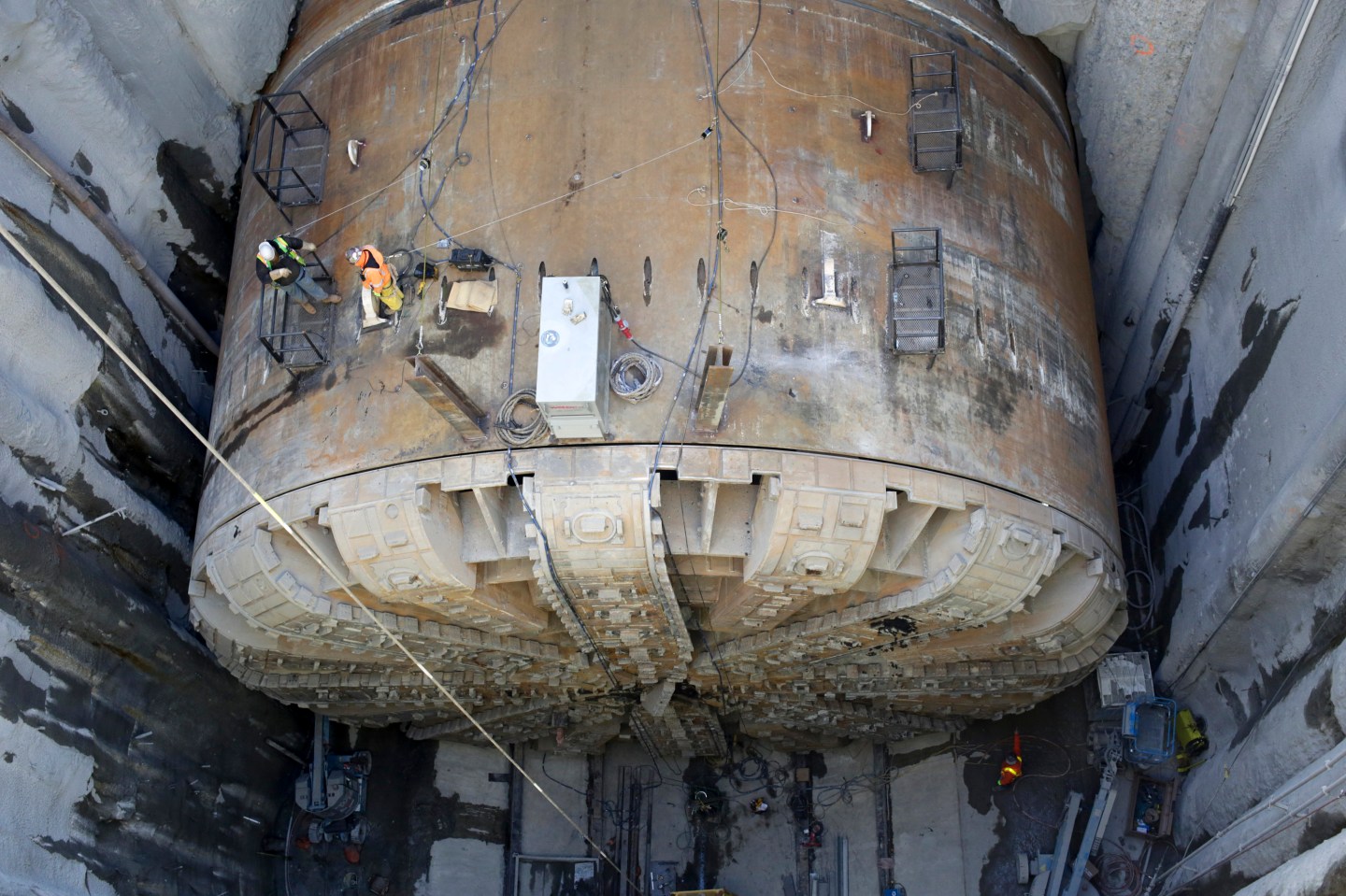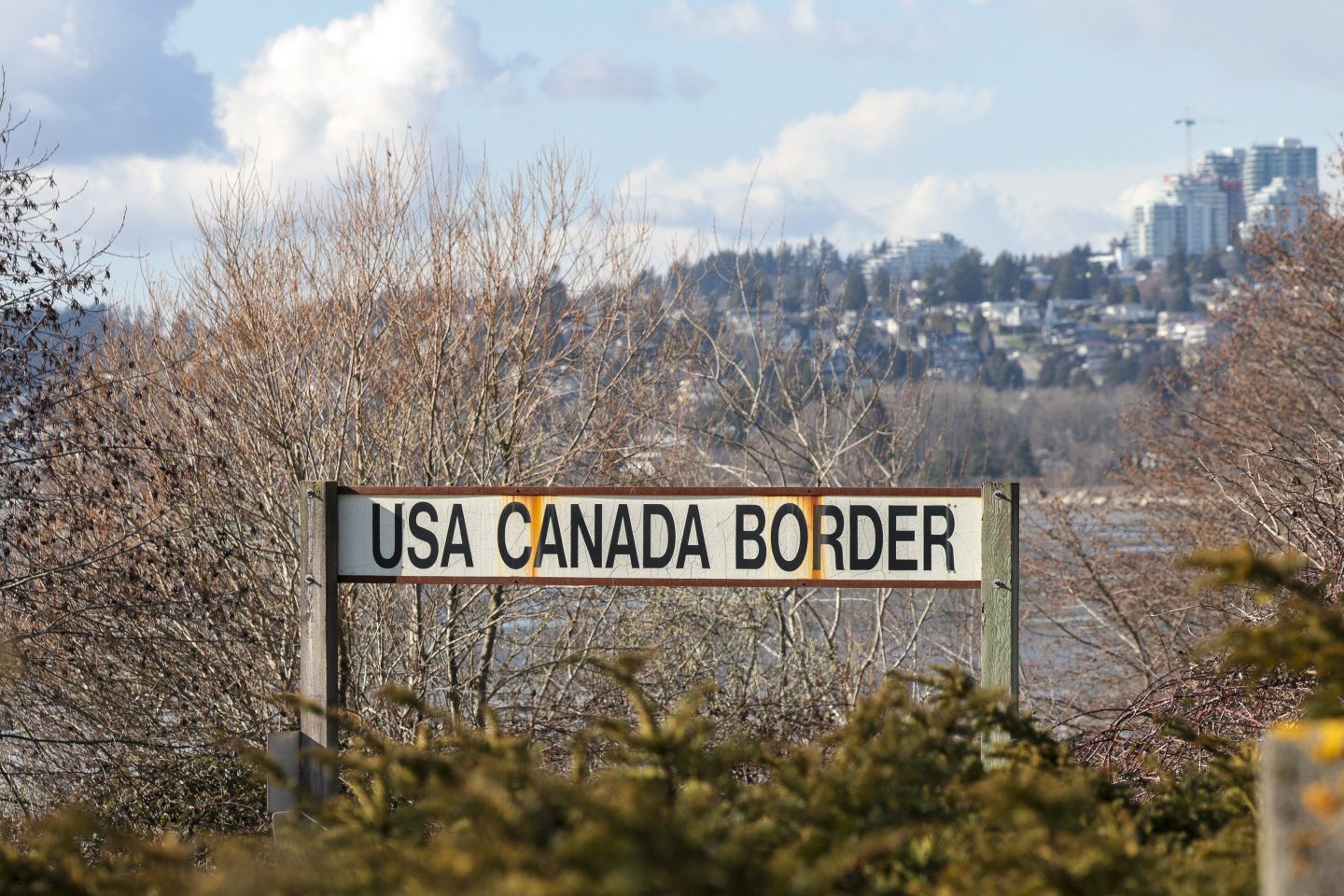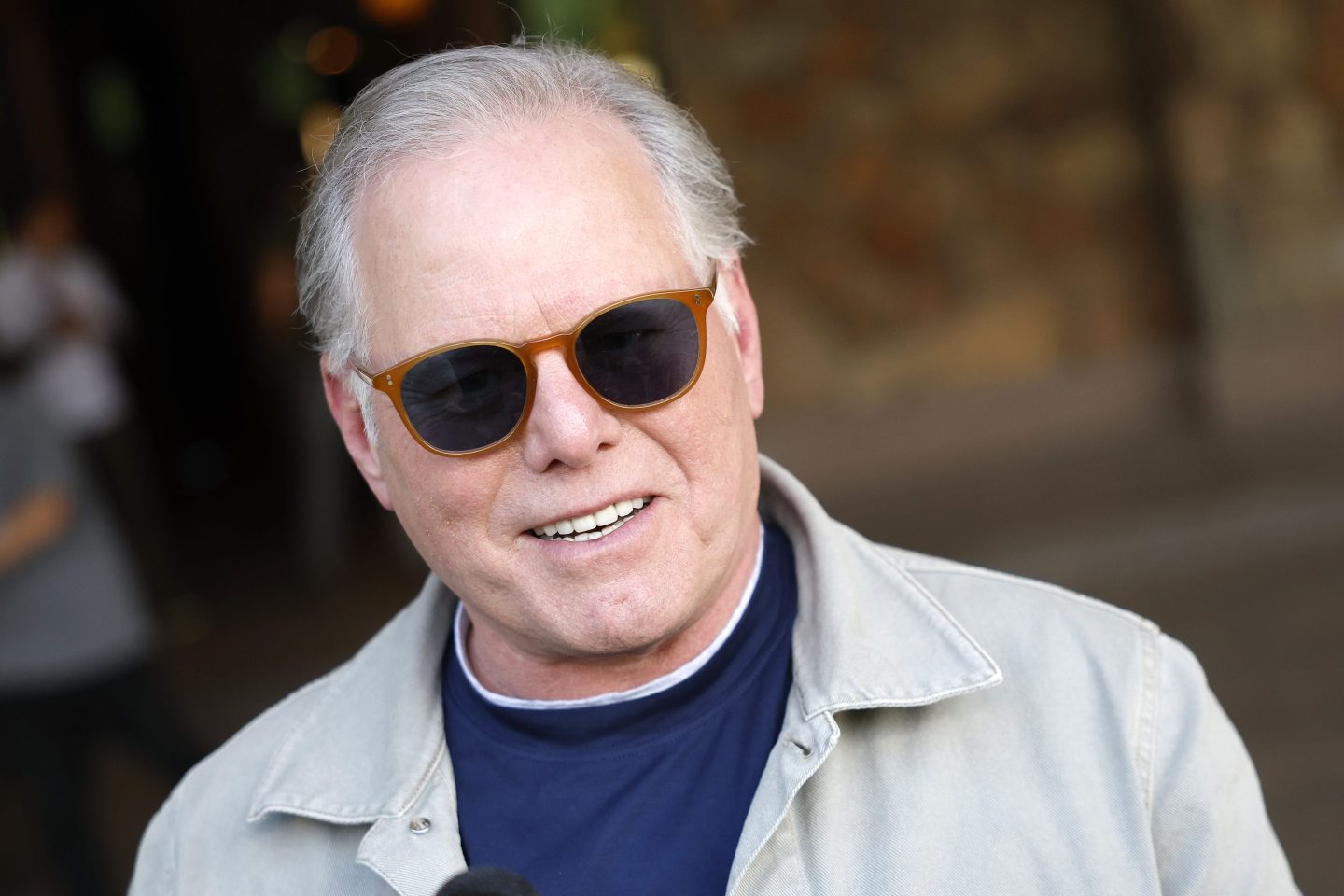Almost exactly two years after the breakdown of one of the world’s largest underground drills, Seattle will finally resume work on the massive Alaskan Way Viaduct tunnel later this month. The drill, known as Bertha, broke in December 2013, with repair efforts ongoing since then. In late November, the drill made its first test rotations, and work is scheduled to resume on Dec. 23. Bertha’s tunnel will, someday, reroute a crumbling elevated highway underground and beautify Seattle’s waterfront while keeping car traffic flowing.
But first, one of the wildest infrastructure tragicomedies of our time is returning for season two.
The saga started in 2001, when an earthquake damaged the elevated highway that had long run along Seattle’s waterfront. The highway was slated for demolition, and a debate about alternatives ensued. Community activists lobbied for a “surface street option,” but city and state leaders eventually pushed through their plan for a huge deep-bore tunnel carrying four lanes of traffic.
At 58 feet in diameter, the tunnel would be the biggest ever drilled. It would travel 1.7 miles beneath 158 downtown structures (that’ll be important later), at depths of as much as 200 feet. The five-story-high drill for the work was custom-built by Osaka-based Hitachi Zosen.
What has ensued is a bit like a slapstick silent film, with hundreds of hard-hat wearing construction workers in the Buster Keaton role.
In December of 2013, having dug out only about 1,000 feet of the planned route, Bertha hit an eight-inch wide steel well casing. Soon after, the drill overheated. After it was shut down, the crews found extensive damage on the drill face and cutting teeth.
Lawsuits began almost immediately. Contractor Seattle Tunnel Partners, as part of efforts to establish liability, has argued that Washington’s Department of Transportation had misidentified the well casing as made of PVC rather than steel. A review board ultimately agreed with STP, although that decision was not legally binding. In fact, in October, WSDOT countersued. There’s still no definitive answer as to who’s to blame for Bertha’s problems.
The repair effort that followed was just as herculean as the project as a whole—and as troubled. Because Bertha builds tunnel walls around herself as she moves forward, the broken drill couldn’t simply be backed out. Instead, STP had to dig a basketball-arena sized repair shaft in front of the drill, and bring in a massive crane to lift out her broken parts.
And then (and this is where things really progressed from tragedy to farce) the routine pumping of groundwater from the tunnel caused unpredictable settling, threatening historic buildings in downtown Seattle. This added another nine months to the repair timetable.
According to The Stranger newspaper, the tunnel has now been delayed four times, from an initial opening date of November 2016 to the current target of April 2018.
Of course, if the Seattle tunnel has had more than its share of absurdity, it’s far from the biggest flub of its kind—big projects almost never come in on schedule and on budget. The Panama Canal expansion, for instance, is currently taking on water. Even with a three (or four, or five) year delay, Seattle’s tunnel would still be less of a mess than Boston’s Big Dig, which was originally slated for completion in 1998, but didn’t open until December 2007. Cost overruns on the project were nearly $20 billion– which won’t be fully paid off until 2038.
In other words, make some popcorn. Bertha’s just getting (re)started.
For more about infrastructure projects, watch this Fortune video:











